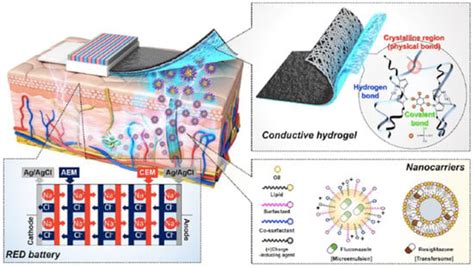In the rapidly evolving field of veterinary medicine, network engineering is playing a crucial role in transforming pet healthcare. As veterinary clinics increasingly rely on advanced technology, the need for robust and reliable network systems becomes paramount. This article explores how network engineering advancements are revolutionizing the industry, from the integration of IoT devices that enhance real-time monitoring to sophisticated networked imaging systems that improve diagnostic accuracy. We’ll delve into the significance of dependable networks in ensuring optimal pet care, the benefits of telemedicine, and the importance of data management and security. Join us as we uncover how cutting-edge network solutions are paving the way for better pet healthcare.
Join dominure.com as we uncover the details of this topic.
1. Overview of Network Engineering in Veterinary Medicine
Network engineering is becoming a cornerstone in the advancement of veterinary medicine, underpinning many of the modern technologies that enhance pet healthcare. This field involves designing and managing the complex systems that enable seamless communication and data exchange across various medical devices and software applications within veterinary practices. From high-speed internet connections to sophisticated local area networks, network engineering ensures that critical information flows efficiently and securely.
In veterinary settings, networks support a wide array of applications, including electronic health records (EHRs), diagnostic imaging systems, and remote monitoring tools. These networks facilitate real-time data access and sharing, enabling veterinarians to make more informed decisions and deliver timely care. Additionally, robust network infrastructure is essential for integrating Internet of Things (IoT) devices, which continuously collect and transmit health data from pets. By providing the foundation for these advanced technologies, network engineering is revolutionizing how veterinary professionals diagnose, treat, and monitor the health of animals, leading to improved

2. Importance of Reliable Networks in Veterinary Clinics
In veterinary clinics, reliable network systems are essential for ensuring that operations run smoothly and that pets receive the best possible care. A dependable network infrastructure supports a range of critical functions, from managing electronic health records (EHRs) to facilitating communication between different medical devices. When networks are stable and secure, veterinarians can access patient information quickly, make informed decisions, and provide timely treatments, all of which are crucial for effective pet healthcare.
A reliable network also ensures uninterrupted access to diagnostic imaging systems and real-time data from monitoring devices. For example, networked imaging systems rely on robust connections to transfer high-resolution images quickly, allowing veterinarians to diagnose conditions with greater accuracy. Similarly, remote monitoring tools depend on consistent network performance to provide ongoing health data, enabling proactive care and early intervention.
Moreover, secure and reliable networks protect sensitive patient information from unauthorized access and data breaches. With the increasing integration of telemedicine and IoT devices in veterinary practices, safeguarding data integrity and privacy is more important than ever. In summary, a well-maintained network infrastructure is crucial for operational efficiency, accurate diagnostics, timely treatments, and the overall security of pet health in

3. Integration of IoT Devices in Pet Healthcare
The integration of Internet of Things (IoT) devices in pet healthcare represents a significant advancement in how veterinarians monitor and manage animal health. IoT devices, such as wearable health trackers and smart feeding systems, continuously collect and transmit data about pets’ vital signs, activity levels, and behavior. This real-time data provides veterinarians with valuable insights into a pet’s health status, enabling more personalized and proactive care.
For instance, wearable monitors can track a pet’s heart rate, temperature, and activity patterns, alerting veterinarians to potential health issues before they become serious. Smart feeding systems can monitor dietary intake and adjust feeding schedules automatically based on a pet’s needs. The seamless integration of these devices into a clinic’s network ensures that the data collected is readily accessible for analysis and diagnosis. By leveraging IoT technology, veterinary practices can enhance their monitoring capabilities, improve diagnostic accuracy, and ultimately offer better care for pets.

4. Enhancing Diagnostic Accuracy Through Networked Imaging Systems
Networked imaging systems are revolutionizing diagnostic accuracy in veterinary medicine by providing enhanced capabilities for capturing, transmitting, and analyzing medical images. These systems utilize advanced networking technology to ensure that high-resolution images from digital radiography, ultrasound, and other imaging modalities are quickly and reliably transmitted to diagnostic workstations. This rapid access to detailed images allows veterinarians to assess and interpret data more efficiently.
The integration of networked imaging systems enables real-time collaboration among veterinary professionals. Specialists can remotely access and review images, facilitating second opinions and collaborative diagnoses without the need for physical presence. This connectivity also supports advanced image processing techniques, such as 3D reconstruction and computer-aided diagnostics, which enhance the clarity and precision of medical evaluations.
Additionally, networked imaging systems streamline the storage and retrieval of historical imaging data, making it easier to track changes in a pet’s condition over time. This comprehensive view of a pet’s health history improves diagnostic accuracy and treatment planning. Overall, the use of networked imaging systems in veterinary clinics ensures that veterinarians have access to the most accurate and timely diagnostic information, leading to better health outcomes for pets.

5. Telemedicine and Remote Monitoring for Pets
Telemedicine and remote monitoring are transforming how veterinary care is delivered, offering pet owners and veterinarians enhanced convenience and flexibility. Telemedicine allows for virtual consultations between veterinarians and pet owners, enabling remote diagnosis and treatment recommendations without the need for an in-person visit. This is particularly beneficial for routine check-ups, follow-up appointments, and managing chronic conditions. Through video calls and digital communication tools, veterinarians can assess a pet’s condition, provide guidance, and adjust treatment plans as needed, all from a distance.
Remote monitoring further extends this capability by enabling continuous observation of a pet’s health. Devices such as wearable health trackers and home-based monitoring systems collect real-time data on various health metrics, including heart rate, activity levels, and behavioral patterns. This data is transmitted to the veterinarian via secure networks, allowing for ongoing assessment and timely interventions.
The combination of telemedicine and remote monitoring not only improves access to veterinary care but also enhances the quality of care. It allows for early detection of potential health issues, better management of chronic conditions, and more personalized treatment plans, ultimately leading to improved health outcomes and greater peace of mind for pet owners.

6. Data Management and Security in Veterinary Practices
Effective data management and security are critical components of modern veterinary practices, ensuring that sensitive pet health information is handled responsibly and protected from unauthorized access. With the increasing reliance on digital systems for storing electronic health records (EHRs), diagnostic data, and remote monitoring information, robust data management practices are essential.
Veterinary clinics must implement secure network infrastructures to safeguard patient data. This includes using encryption protocols for data transmission, establishing secure access controls, and regularly updating security software to protect against cyber threats. Additionally, data backups and disaster recovery plans are vital to prevent data loss in the event of a system failure or breach.
Proper data management also involves organizing and categorizing information efficiently to facilitate quick access and retrieval. By maintaining accurate and well-organized records, veterinarians can provide timely and informed care while ensuring compliance with privacy regulations. Overall, prioritizing data security and management practices helps maintain the integrity and confidentiality of pet health information, fostering trust and delivering high-quality care.

7. Case Studies of Network Solutions Improving Veterinary Outcomes
Case studies highlight the transformative impact of network solutions on veterinary outcomes. For instance, a veterinary clinic that implemented a networked imaging system saw a significant improvement in diagnostic accuracy. The system allowed for rapid transmission of high-resolution images to specialists, enabling quicker and more precise diagnoses, which led to better treatment outcomes for complex cases.
Another example involves the integration of remote monitoring devices in managing chronic conditions. A pet with diabetes was monitored through a networked glucose monitoring system that provided real-time data to both the owner and veterinarian. This continuous data flow facilitated timely adjustments to the pet’s treatment plan, resulting in improved health management and reduced hospital visits.
These case studies underscore how advanced network solutions enhance veterinary care by enabling better diagnostics, more effective chronic condition management, and ultimately, improved health outcomes for pets.

8. Future Trends in Network Engineering for Veterinary Medicine
The future of network engineering in veterinary medicine promises exciting advancements that will further enhance pet healthcare. Emerging trends include the increased adoption of 5G technology, which will significantly boost the speed and reliability of data transmission. This will enable even more sophisticated remote monitoring and telemedicine applications, allowing for near-instantaneous data exchange and improved real-time interaction between veterinarians and pet owners.
Artificial intelligence (AI) and machine learning are also set to play a pivotal role in advancing networked veterinary systems. These technologies will enhance diagnostic accuracy by analyzing large volumes of data from imaging systems and remote monitoring devices, offering predictive insights and automated diagnostic support.
Furthermore, the integration of blockchain technology could revolutionize data security in veterinary practices. Blockchain can provide a decentralized and immutable ledger of pet health records, ensuring data integrity and enhancing privacy protections.
As network infrastructure continues to evolve, veterinary practices will benefit from more interconnected and intelligent systems, leading to more efficient care delivery and improved outcomes. These advancements will help veterinary professionals stay at the forefront of pet healthcare, ensuring that pets receive the highest standard of care in an increasingly digital world.

Network engineering is revolutionizing veterinary medicine by enhancing diagnostic accuracy, enabling remote monitoring, and securing data. As technology advances, reliable networks will become even more integral to pet healthcare, driving innovations in telemedicine and IoT devices. Embracing these developments ensures improved care and better health outcomes for pets worldwide.
dominure.com

